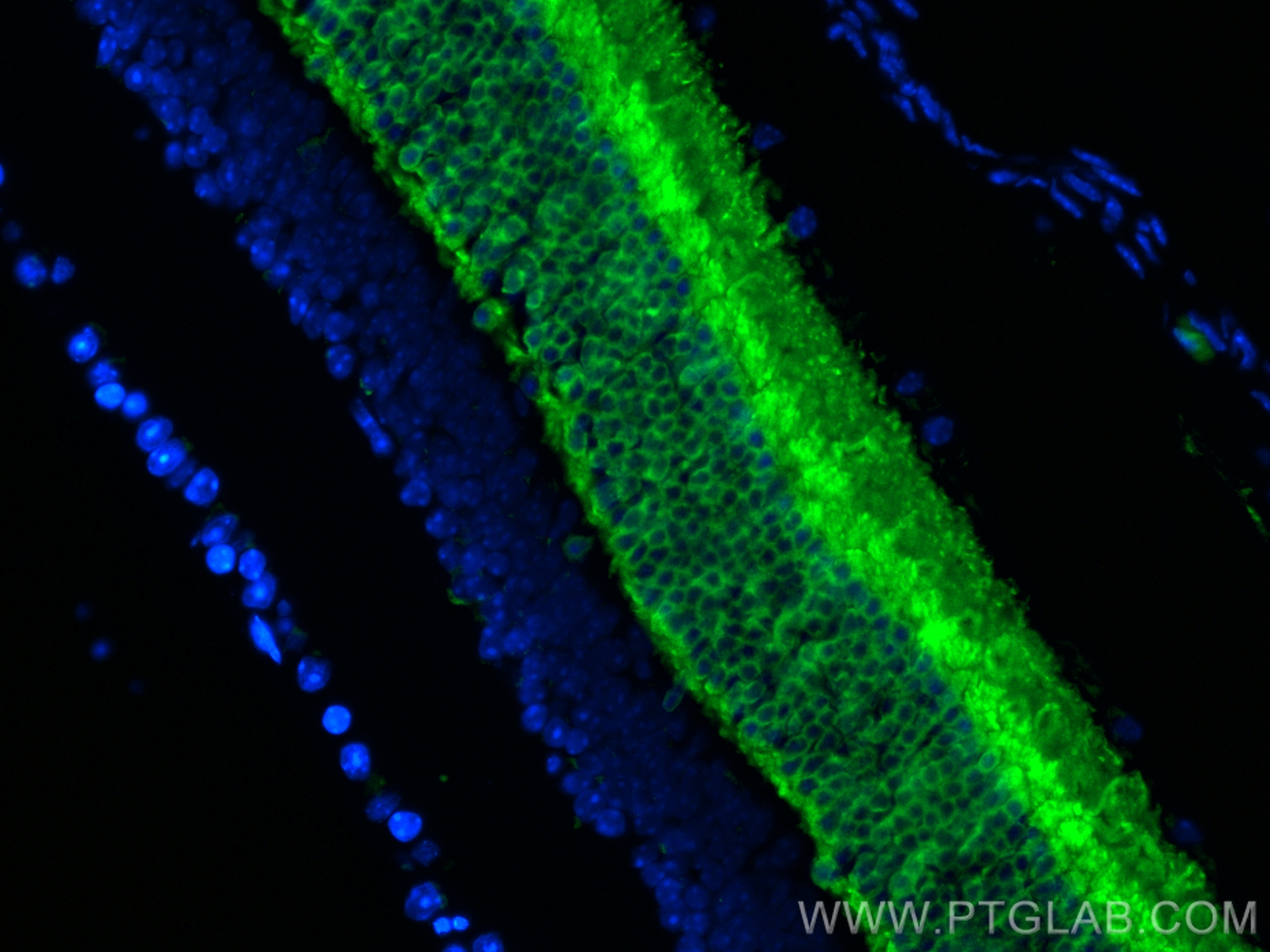验证数据展示
经过测试的应用
| Positive IF-P detected in | mouse eye tissue |
推荐稀释比
| 应用 | 推荐稀释比 |
|---|---|
| Immunofluorescence (IF)-P | IF-P : 1:50-1:500 |
| It is recommended that this reagent should be titrated in each testing system to obtain optimal results. | |
| Sample-dependent, Check data in validation data gallery. | |
产品信息
CL488-10073 targets Recoverin in IF-P applications and shows reactivity with human, mouse, rat samples.
| 经测试应用 | IF-P Application Description |
| 经测试反应性 | human, mouse, rat |
| 免疫原 | Recoverin fusion protein Ag0119 种属同源性预测 |
| 宿主/亚型 | Rabbit / IgG |
| 抗体类别 | Polyclonal |
| 产品类型 | Antibody |
| 全称 | recoverin |
| 别名 | Protein CAR, RCV1, RCVRN, recoverin |
| 计算分子量 | 24 kDa |
| 观测分子量 | 23 kDa |
| GenBank蛋白编号 | BC001720 |
| 基因名称 | Recoverin |
| Gene ID (NCBI) | 5957 |
| RRID | AB_3672428 |
| 偶联类型 | CoraLite® Plus 488 Fluorescent Dye |
| 最大激发/发射波长 | 493 nm / 522 nm |
| 形式 | Liquid |
| 纯化方式 | Antigen affinity purification |
| UNIPROT ID | P35243 |
| 储存缓冲液 | PBS with 50% glycerol, 0.05% Proclin300, 0.5% BSA , pH 7.3 |
| 储存条件 | Store at -20°C. Avoid exposure to light. Stable for one year after shipment. Aliquoting is unnecessary for -20oC storage. |
背景介绍
Recoverin, belonging to a family of the neuronal calcium sensor (NCS) proteins, has a restricted expression in retinal photoreceptors or neurons or neuroendocrine cells. It has been suggested to play a role in light and dark adaptation by regulating rhodopsin phosphorylation. Recently, it has been found that autoantibodies against recoverin (24 kDa) have been strongly associated with cancer -associated retinopathy (CAR) syndrome, a paraneoplastic disease of the retina. But functions of recoverin in cancer cells remain unknown.
实验方案
| Product Specific Protocols | |
|---|---|
| IF protocol for CL Plus 488 Recoverin antibody CL488-10073 | Download protocol |
| Standard Protocols | |
|---|---|
| Click here to view our Standard Protocols |
